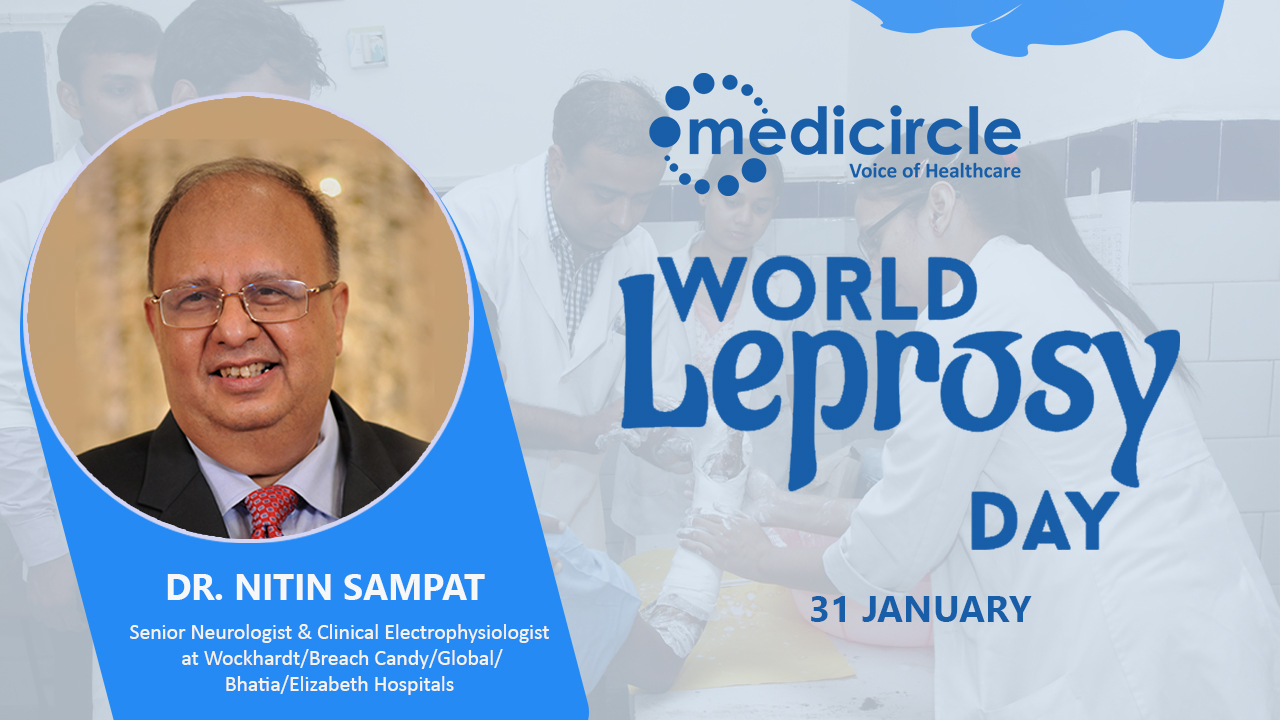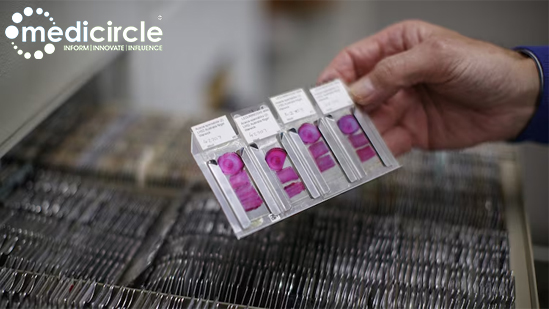Leprosy is a neglected tropical disease that still occurs in more than 120 countries with more than 2 lakh new cases reported every year. The majority of new leprosy cases occur in India, Brazil, Indonesia, and parts of Africa. India is currently running one of the largest leprosy eradication programs in the world. Despite these 11,04,451 new cases of leprosy were reported in 2019. Medicircle is conducting an exclusive series on leprosy. Through the series, we aim to create awareness about leprosy and share the views of people who have done commendable work for leprosy patients.
Dr. Nitin Sampat is a Senior Neurologist with 38 years of rich experience. He is associated as Honorary Neurologist with Wockhardt Hospital, Breach Candy Hospital, Bhatia Hospital, and Global Hospital. His key areas of focus are headache, migraine stroke, and clinical electrophysiology.
WHOs efforts had an impact
Dr. Sampat quotes figures from literature in 1985 and informs that “prevalence of leprosy then was almost 36 per 10,000 people in India. With efforts from WHO in the 2000s the numbers have come down considerably in comparison. I
Efforts to halt disease early
Dr. Sampat informs, “I had carried out a trial many years ago, on the early detection of leprosy cases. I used to examine the suspected cases. The study tried to bring forward suspected cases through clinical electrophysiology. The purpose was to identify the disease very early. Since leprosy involves both neurologists as well as dermatologists, as neurologists we worked on the nerve-related ailments at the very initial phases and worked in collaboration with dermatologists who subsequently carried out the treatment for skin ailments.”
The uncommon and interesting fact about leprosy spread
Dr. Sampat sheds light on a very uncommon cause of the spread of leprosy. He says, “though it is completely uncommon in India but in places like Mexico and Africa, monkeys, armadillos, and chimpanzees are a source of infection. They carry the disease and transmit it to humans. These animals led to an increase of leprosy cases if considering the prevalence of the disease from a worldwide perspective.
Why Leprosy re-emerged in India
Dr. Sampat points out that
- “The biggest drawback is socio-economic problems and nutrition. It can be overpopulation also. There are large families of 12-15 members staying together and in poor conditions where the father cannot provide for all the children. So, nutrition suffers, and basic care required for good health suffers.
- Furthermore, if one member gets diagnosed with leprosy, the other family members who are in close contact due to small houses might get affected. Although 90% of the contacts develop resistance on their own, they can get infected, but they don't manifest the disease. The rest of the 10% have almost a 15% chance of developing leprosy, vis-à-vis the common population.
- Also, although the BCG vaccine for tuberculosis could be used as a leprosy vaccine as well, there is a tendency of not taking it routinely because people question the protection it gives – which is 20 to 80% in leprosy. People of the previous generation have taken it more commonly but now the tendency has come down.
- Other medication alternatives like chemoprophylaxis also have doubtful efficacy and they last for a short duration and therefore it's not routinely given to people. It did not get pushed because the results from it were not very impactful.
- Rifampicin 600mg have been given to close contacts of a leprosy patient but efficacy has not been high and lasts for a shorter time. So, that also is not routinely practiced,” Dr. Sampat says.
NGOs and health workers can help curb the stigma
Dr. Sampat agrees that Leprosy is a big stigma in the society. He says, “Families of females of marriageable age particularly hide this disease because of obvious reasons of harassment from in-laws. Myths have to be dispelled from people’s minds because leprosy is eminently curable if diagnosed early. NGOs and health workers can help spread this awareness through door-to-door campaigns.
Be responsible towards diagnosis and treatment
Dr. Sampat advises the following:
- “If there are any white patches or red patches on the body and sensation is missing there or you do not get sweat there, then report to your doctor immediately and then probably meet a dermatologist or a neurologist and get it sorted out with investigations and start treatment early.
- Improve nutrition so that body can fight the disease. If the cellular immune system is high in an individual the chances of getting the infections are much lesser.
- Just like in COVID, avoid direct respiratory droplets from an infected patient. One can get Infection from urine, stool, or breast milk also. So, if the patient is affected, she should avoid feeding. People should not pass on urine or stool just anywhere because the bacteria persist in the atmosphere for some time.
Skin smear test, EMG and other methods can be used for early diagnosis leading to cure. Many patients have been completely treated.” says Dr. Sampat.
(Edited by Amrita Priya)

 Dr. Nitin Sampat, Senior Neurologist, talks about Leprosy, the causes of re-emergence, stigma attached to it, and the need to understand that treatment is possible.
Dr. Nitin Sampat, Senior Neurologist, talks about Leprosy, the causes of re-emergence, stigma attached to it, and the need to understand that treatment is possible.












.jpg)












_elected_as_global_president_of_the_world_congress_of_ophthalmic_anaesthesia.jpg)






